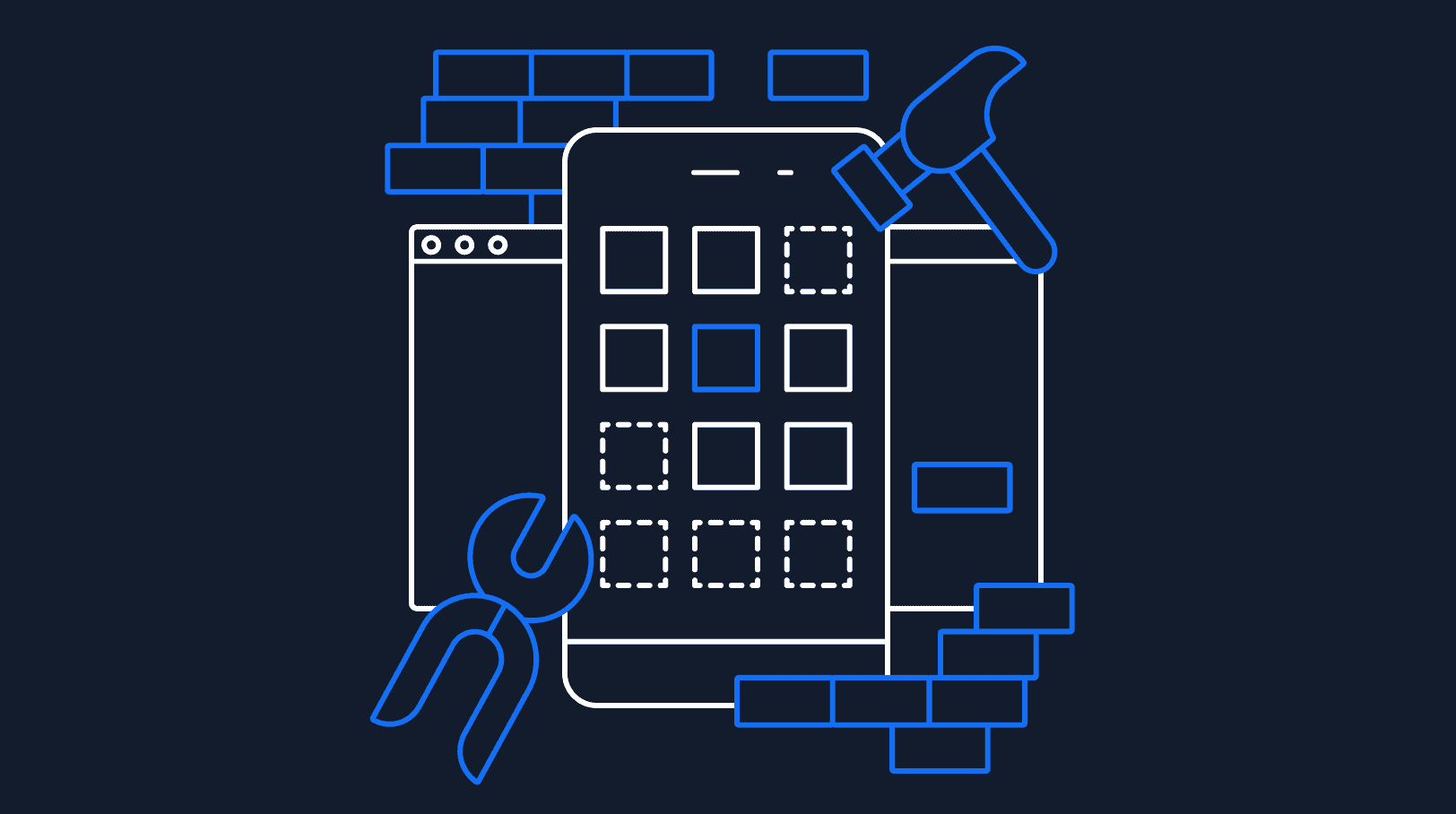Low-Code Development Examples: What Can You Build?

Web-based portals, B2C mobile apps, process automation, and beyond. Low-code development makes it possible to build impactful apps at speed and scale.
As a refresh, low-code development platforms abstract low-level coding and automate manual processes. Through visual development tools and reusable components, low-code reduces your time to deliver custom web and mobile apps. Low-code platforms support rapid, iterative development cycles. They eliminate traditional development and operations inefficiencies with an integrated set of tools that streamline the complete application life cycle.
Based on our experience, we see four common use cases that are the perfect fit for developing with a low-code platform:
- Innovation
- Customer experience
- Operational efficiency
- Legacy modernization
Let’s explore where these four use cases fit into your business.
Innovation apps
Innovation apps stem new digital business models, products, and channels and help grow and differentiate the organization. Often, they leverage emerging technologies like IoT, AI, and Machine Learning to unlock new sources of value.
Innovation apps usually start as ideas with loose requirements and a high rate of change. Because of this, they require a high degree of business involvement throughout the entire development process.
Some examples of innovation apps include:
- AntTail’s medicine tracking app
- Solomon Group’s RFID wristband event access app
- KLM’s IoT equipment tracking app
- Heijman’s IoT-based smart building management app
Low-code platforms enable organizations to take a test-and-learn approach to innovation, exploring new ideas quickly and at a low cost. Business users can build functional prototypes and collaborate seamlessly with development teams to extend apps with complex logic and integrations, allowing the organization to iterate toward optimal outcomes and quickly scale once ideas are proven.
Customer experience apps
Customer engagement apps enable customers and partners to interact or transact with the business. Customer engagement apps improve satisfaction, retention, and revenue. The organization has a relatively well-defined idea of the app, but the development team must adapt to the unknowns revealed during the process.
Customer-facing applications often face high expectations from unforgiving users in terms of both usability and seamless, multi-channel access. There are often underlying operational improvements required to support customer-facing processes, and integration with Systems of Record is required to support the experience layer and existing processes.
Some examples of customer engagement apps include:
- Agent/broker portals
- Customer portals
- Self-service policy administration apps
- Claims management apps
- Student services apps for universities
Recognizing that many enterprises lack sufficient UX resources, low-code platforms often include an integrated UI framework with out-of-the-box widgets and building blocks that make it easy for individuals without UX backgrounds to build highly usable, multi-channel apps. At the same time, a cloud-native architecture is key to elastic scaling for large user bases and automatic failover for the continuous operation of critical B2C apps or portals.
Operational efficiency apps
Operational efficiency apps are employee- or partner-facing apps designed to lower costs by reducing or automating manual or paper-based processes. Operational efficiency apps may support departmental, cross-departmental, or company-wide processes and are often driven by compliance needs (i.e., avoiding cost penalties), particularly in regulated industries. This type of application almost always integrates with core systems. The closer the app is to the business’s core systems, the more critical operational robustness becomes.
Examples of operational efficiency apps include:
- Claims processing
- Supply-chain management
- Invoice processing
- Device tracking
- University registration
- Order management apps
Low-code platforms enable organizations to harness domain experts’ knowledge throughout the entire app lifecycle, enabling iterative design and development of operational efficiency apps. Moreover, platforms typically include out-of-the-box connectors or enable developers to build their own and make them available through a Private App Store, which results in easy integration with systems of record.
Legacy modernization apps
Most of the legacy modernization projects we have seen within our customer base are business-driven transformation initiatives. That is, rather than a pure lift-and-shift of existing functionality, these new apps are meant to replace legacy apps that can’t support new processes or provide the right user experience. As such, they require new functionality but should also support current processes.
With low-code, you can build custom apps to supplement or replace your antiquated legacy systems. Low-code apps are able to integrate with existing systems without disrupting their core functionality. Here’s what’s possible:
- migrate Lotus Notes, Microsoft Access, Sharepoint, Excel, etc. to the cloud
- extend the capabilities and functionality of your systems
- rebuild or replace your legacy systems
Low-code platforms enable organizations to take a user-first approach when replacing legacy systems, by adding new functionality and improving the overall user experience. To ensure they don’t create tomorrow’s legacy headache, such platforms support modern microservices architectures and include built-in capabilities for addressing quality and maintainability at each stage of the life cycle.
